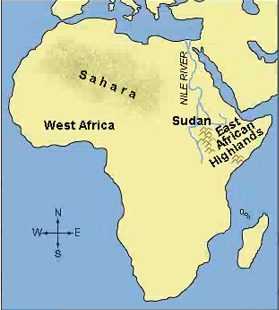题目解析:
【题目翻译】文章中的“exploiting”一词最接近于下列哪个选项?
A选项:making use of 的意思是“利用”
B选项:finding的意思是“找到”
C选项:destroying的意思是“破坏”
D选项:looking for的意思是“寻找”
【判定题型】:题目要求选出与高亮单词意思最接近的选项,故判断本题为词汇题。
【关键词定位】:根据关键词“exploiting,定位到原句“After a few years, the soil was exhausted, so the farmer moved on, exploiting new woodland and leaving the abandoned fields to lie fallow.”
【词汇解析】:词汇“exploiting”的意思是“开采、利用”,带入到原句中,原句的意思是“几年后,土地耗尽了养分,于是农民们继续前进,开辟新的林地,让原来的荒地休耕。”
【选项分析】
A选项:making use of 的意思是“利用”,意思最接近,故为正确答案。
B选项:finding的意思是“找到”,意思不符,故排除。
C选项:destroying的意思是“破坏”,意思不符,故排除。
D选项:looking for的意思是“寻找”,意思不符,故排除。


 At the end of the Pleistocene (around 10,000 B.C.), the technologies of food production may have already been employed on the fringes of the rain forests of western and central Africa, where the common use of such root plants as the African yam led people to recognize the advantages of growing their own food. The yam can easily be resprouted if the top is replanted. This primitive form of "vegeculture" (cultivation of root and tree crops) may have been the economic tradition onto which the cultivation of summer rainfall cereal crops was grafted as it came into use south of the grassland areas on the Sahara's southern borders.
At the end of the Pleistocene (around 10,000 B.C.), the technologies of food production may have already been employed on the fringes of the rain forests of western and central Africa, where the common use of such root plants as the African yam led people to recognize the advantages of growing their own food. The yam can easily be resprouted if the top is replanted. This primitive form of "vegeculture" (cultivation of root and tree crops) may have been the economic tradition onto which the cultivation of summer rainfall cereal crops was grafted as it came into use south of the grassland areas on the Sahara's southern borders.